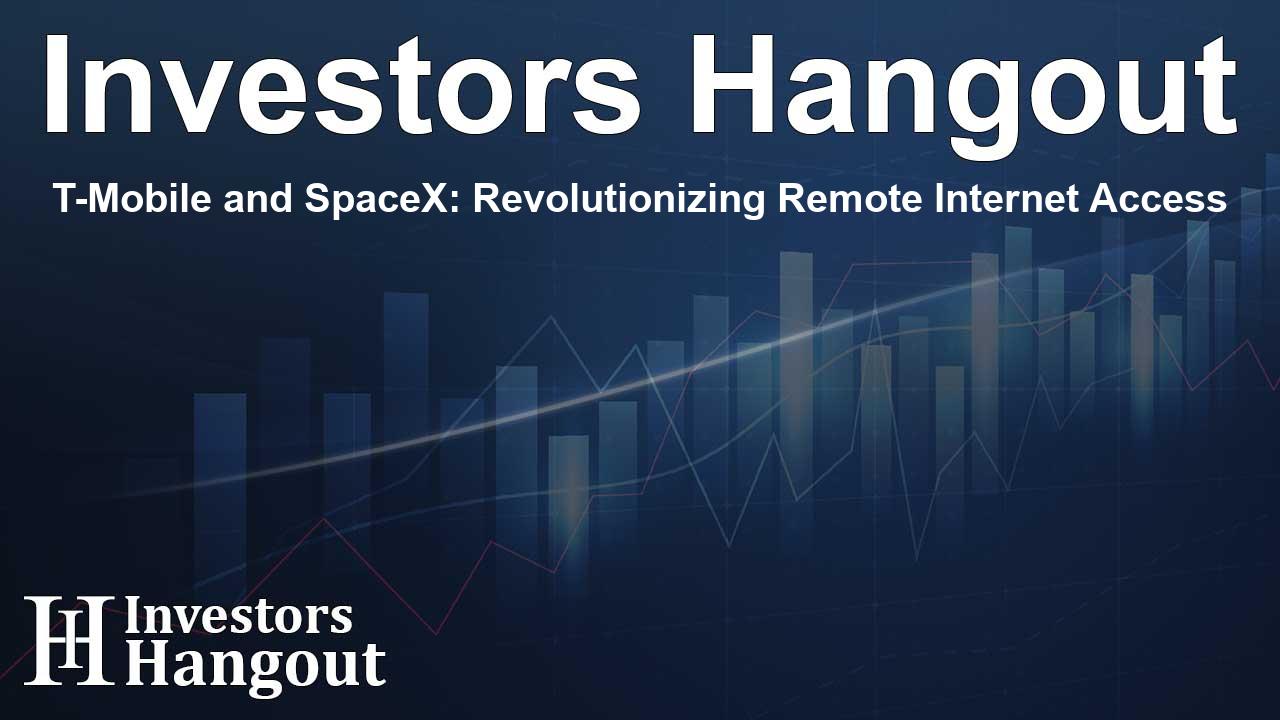T-Mobile and SpaceX: Revolutionizing Remote Internet Access

T-Mobile and SpaceX Join Forces for Better Connectivity
The recent collaborative effort between T-Mobile and SpaceX represents a significant step forward in the quest to improve internet connectivity in remote areas. The Federal Communications Commission (FCC) has granted a license allowing this dynamic partnership to offer internet access from space, particularly targeting locations previously described as "dead zones." This approval is a game changer in the telecommunications landscape.
The Significance of the FCC's Approval
For the first time, the FCC has authorized a satellite operator, in this case, SpaceX, to work alongside a wireless carrier like T-Mobile to provide supplementary coverage using flexible-use spectrum bands. This initiative primarily aims to reach underserved areas, thereby ensuring that a broader population has access to reliable telecommunications services.
Innovative Technology at Work
The innovation lies in the direct-to-cell technology deployed by the satellites, which integrates seamlessly with T-Mobile's existing network. This advancement is particularly crucial when considering the vast landscapes that hinder traditional cellular towers' ability to deliver connectivity. T-Mobile has identified around 500,000 square miles of the U.S. that remain inaccessible due to geographical challenges.
Background of the Partnership
The partnership between T-Mobile and SpaceX was born out of a shared vision for a more connected world. In early 2022, they announced plans to work together, and by January of the following year, they launched the first batch of satellites into low Earth orbit using SpaceX’s Falcon 9 rocket.
FCC Chair's Insight
FCC Chair Jessica Rosenworcel emphasized the commission's role in fostering competition within the space economy by encouraging collaborations between terrestrial mobile providers and satellite operators. She stated that this partnership is a crucial step in eradicating the lingering mobile dead zones.
Future Prospects for Remote Coverage
Looking forward, this partnership not only aims to fill the connectivity gaps but also sets a precedent for future collaborations. While T-Mobile and SpaceX are the first to receive this type of approval, there are numerous other companies awaiting their turn for FCC review. The hope is that the successful implementation of this technology will inspire further innovations in satellite communications to further enhance coverage.
Impact on Disaster Response
In addition to expanding regular connectivity, this technology plays a pivotal role in disaster recovery efforts. Recently, the FCC enabled SpaceX and T-Mobile to use this direct-to-cell capability to help residents in North Carolina who were significantly impacted by Hurricane Helene. Such provisions are vital for ensuring communication during emergencies.
Conclusion: A New Era in Telecommunications
The T-Mobile and SpaceX partnership marks the beginning of a new era in telecommunications, with a focus on extending internet accessibility to all corners of the country. With the approval of their innovative technology by the FCC, the future of connectivity looks promising. By bridging the gap between satellite and terrestrial communications, they are paving the way for a more interconnected society.
Frequently Asked Questions
What is the main purpose of T-Mobile and SpaceX's partnership?
The partnership aims to extend internet access to remote areas and eliminate dead zones using SpaceX's satellite technology integrated with T-Mobile's network.
What approval did the FCC grant?
The FCC approved a license for T-Mobile and SpaceX to provide supplemental telecommunications coverage from space, marking a first for such a collaboration.
How does the direct-to-cell technology work?
This technology allows satellites to connect directly with cellphones, enabling coverage in areas where traditional cellular towers are absent.
What challenges does T-Mobile aim to overcome with this partnership?
T-Mobile seeks to address coverage gaps caused by geographical barriers and land-use restrictions, facilitating connectivity across large unserved areas.
How could this technology impact disaster recovery efforts?
The technology enhances communication capabilities in disaster-hit regions, as demonstrated in North Carolina after Hurricane Helene, helping affected communities stay connected.
About The Author
Contact Evelyn Baker privately here. Or send an email with ATTN: Evelyn Baker as the subject to contact@investorshangout.com.
About Investors Hangout
Investors Hangout is a leading online stock forum for financial discussion and learning, offering a wide range of free tools and resources. It draws in traders of all levels, who exchange market knowledge, investigate trading tactics, and keep an eye on industry developments in real time. Featuring financial articles, stock message boards, quotes, charts, company profiles, and live news updates. Through cooperative learning and a wealth of informational resources, it helps users from novices creating their first portfolios to experts honing their techniques. Join Investors Hangout today: https://investorshangout.com/
The content of this article is based on factual, publicly available information and does not represent legal, financial, or investment advice. Investors Hangout does not offer financial advice, and the author is not a licensed financial advisor. Consult a qualified advisor before making any financial or investment decisions based on this article. This article should not be considered advice to purchase, sell, or hold any securities or other investments. If any of the material provided here is inaccurate, please contact us for corrections.
